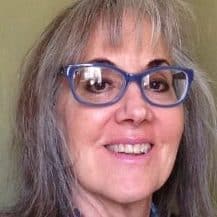The Truth or Consequences City Commission granted another variance at the March 12 meeting, this time allowing a property owner at 320 Marr St. to place or build two homes that are less than 500 square feet.
City Manager Gary Whitehead asked the city commission to stop referring to them as tiny homes during their discussion, since that term is used in a state law that in turn adopted part of the International Residential Code on tiny homes. The state law on tiny homes has numerous requirements, which Whitehead didn’t want to bring into the consideration of the variance. Therefore he asked the city commission to refer to the variance request as one to allow houses “under 500 square feet.”
The state allows tiny homes–defined in part as those under 400 square feet– in all New Mexico counties, but counties and cities can impose their own zoning codes that restrict their allowance and where they can be placed.
The city zoning code has no provision for tiny homes. The 320 Marr St. owner, Clayton Chowning, has two lots at that address. He is in a R-3 or high-density residential zone, which requires single family homes to be 700 square feet and that the lot be 3,000 square feet.
The city’s Planning and Zoning Commission held a public hearing on the variance Feb. 8 and recommended approval. Neither the P&Z nor the city commission asked about the boundaries of the two lots and the drawing provided by the owner did not show any division, just one 6,000 square-foot lot. Therefore setback requirements weren’t discussed or questioned as part of the variance request, nor was parking.
The city’s variance code, Chapter 16, Article V, Section 11-5-5, states, “The variance shall provide relief from the strict application of dimension, distance, parking or setback requirements of this code.”
The variance code goes on to say, “The property must be irregular, narrow, or steep or otherwise have physical conditions where application of the requirements of this Code would result in practical difficulty or unnecessary hardship to the owner in the use of his land or building.”
Neither the P&Z nor the city commission asked about or established if the lots have physical conditions precipitating a variance request. Without some physical issue with the lot, the variance application should never have come forward, since that is the only reason for considering a variance request.
City Attorney Jay Rubin said, during discussion, that variances are granted on a case by case basis, “with a different set of facts” in each case, implying that granting variances do not weaken the city’s zoning code.
But the city commission doesn’t make findings of fact.
As usual, each commissioner merely expressed their opinion or voted silently.
If variance applicants who were refused wanted to take the city to court for discrimination or unequal application of the law, they would have little difficulty showing the capriciousness of the city commission’s rulings.
The city commissions, past and present, have granted so many variances, so many exceptions, that the zoning code is shot through with holes. But it takes time, energy and money to bring such a suit, and local judges have historically favored the government, which gives the city a lot of cover.
Indeed, the city commissioners appear not to know that they are sitting as a quasi-judicial body and that they are making rulings when they vote whether to grant variances. They are granting exceptions to or interpreting city code. They are determining what private property owners may or may not do with their property–and setting precedent in the process.
City Commissioner Ingo Hoeppner said he was not in favor of allowing smaller homes because it will increase the short-term rental or airbnb market, which he sees as exacerbating the city’s long-term housing shortage.
In response, Mayor Pro Tem Amanda Forrister said, “We can’t control what people do with their private property.”
Considering that she was ruling on allowing or disallowing what Chowning could do with his property, that was a nonsensical assertion, demonstrating that she didn’t understand the city commission’s legislative zoning powers or its quasi-judicial powers, while exercising them.
An aside–lots of cities have passed zoning and long-term, short-term rental laws–especially tourist towns. Hoeppner’s point, although well taken, was off-point in considering a variance’s trigger–physical hardship–and the consequent findings of fact if that threshold is met.
Mayor Rolf Hechler said he thought two small homes at that address would not decrease property values, which is a finding of fact that is to be considered in whether to grant a variance, according to city code.
Since Hechler just came to that conclusion, without evidence or testimony, it was not a finding of fact. Hechler did say he called two real estate agents “who were not as concerned,” failing to name what that concern might be. He also said the agents noted there was “an RV park right next to it.”
At some later date, the city commission agreed, the zoning code needs to be amended to consider alternative housing, such as tiny homes, including “containers” and park model homes.
City Commissioner Destiny Mitchell was absent, so the vote on the variance was among four city commissioners. City Commissioner Merry Jo Fahl voted in favor of granting the “under 500 square feet” single-family home–two of them–on the two-lot property totaling 6,000 square feet, as did Hechler and Forrister. Hoeppner voted nay. The variance was therefore granted.

